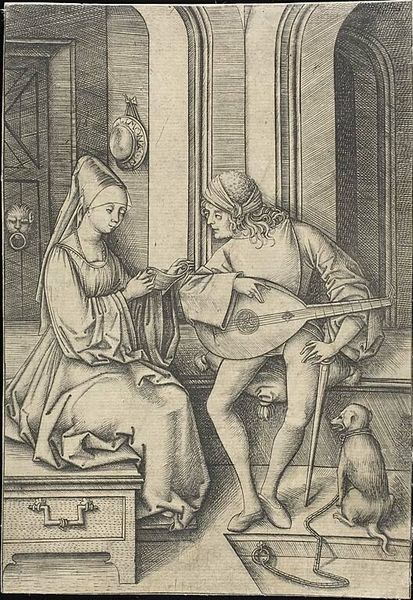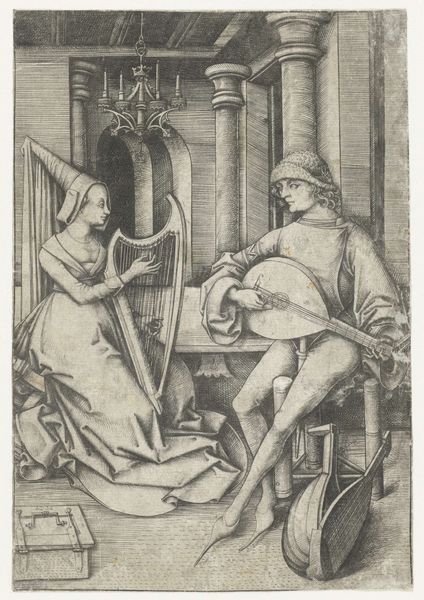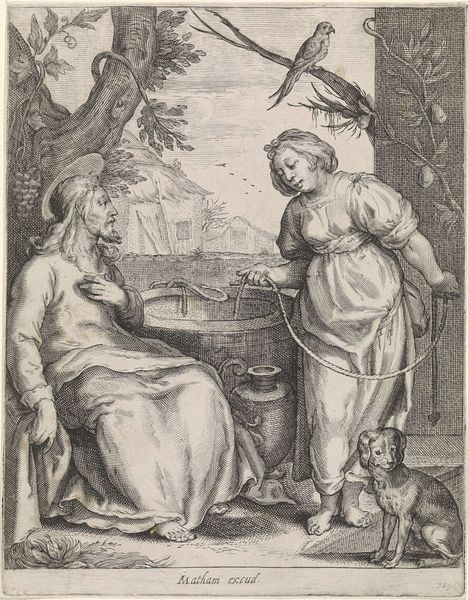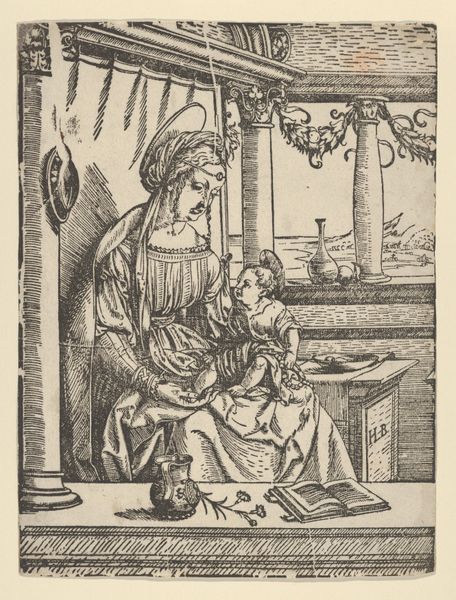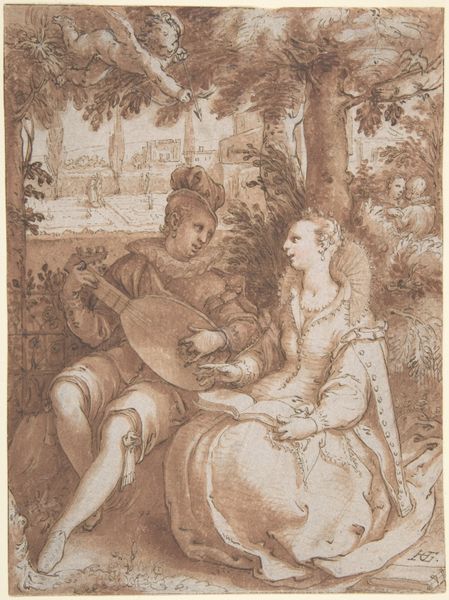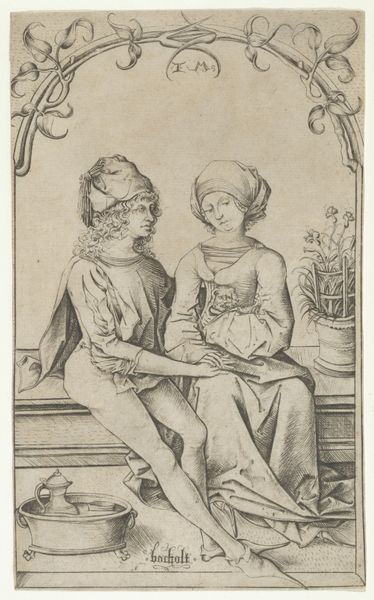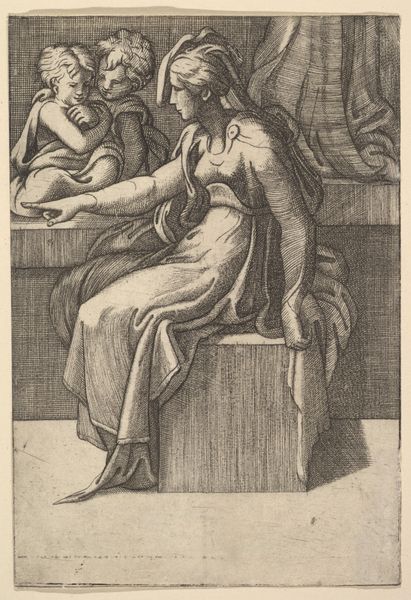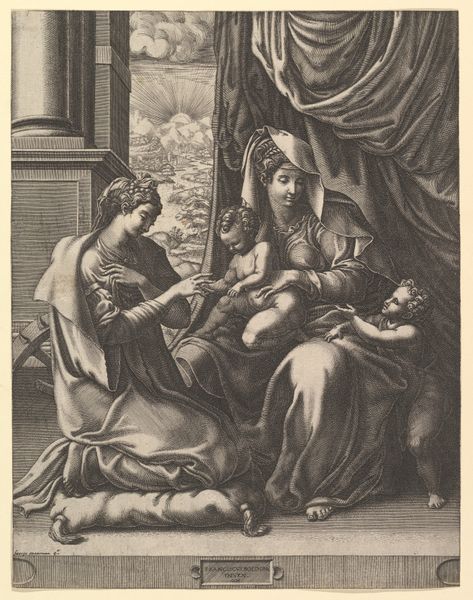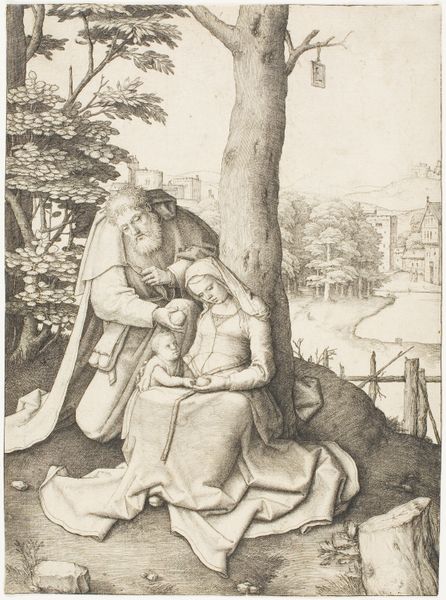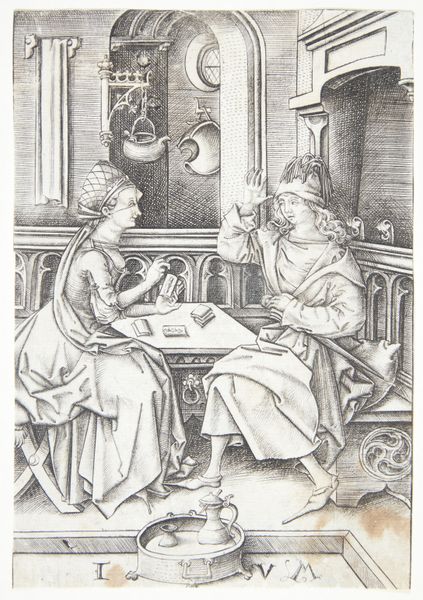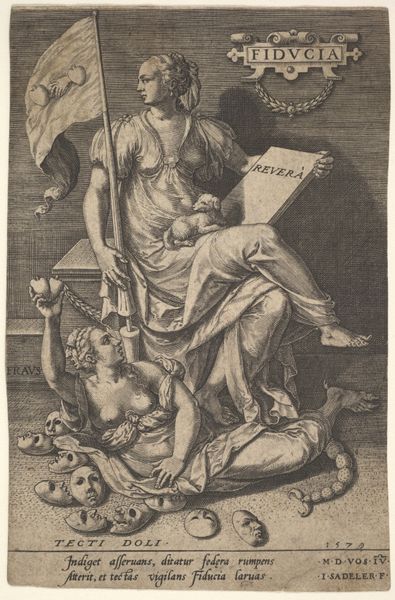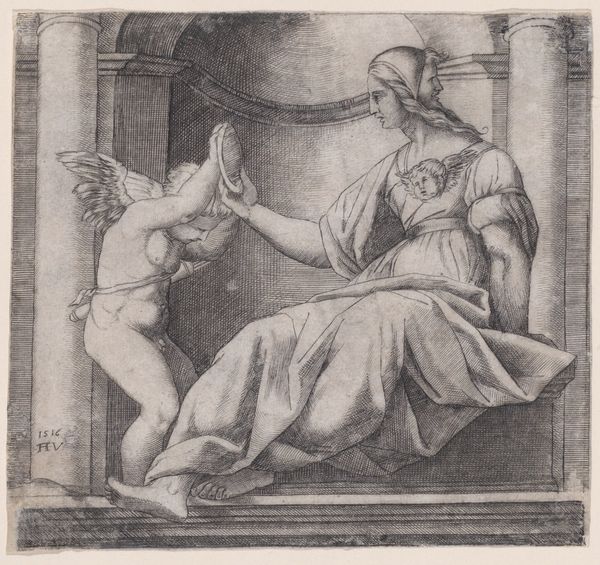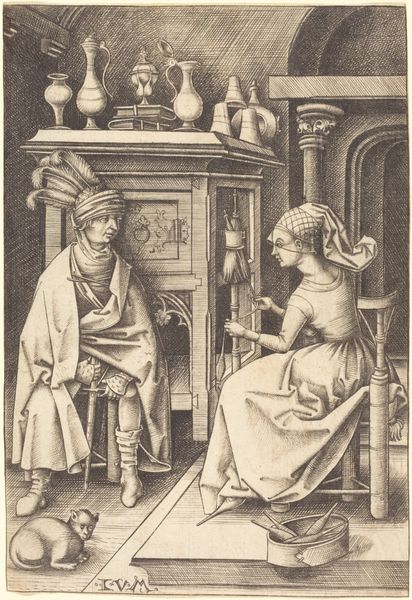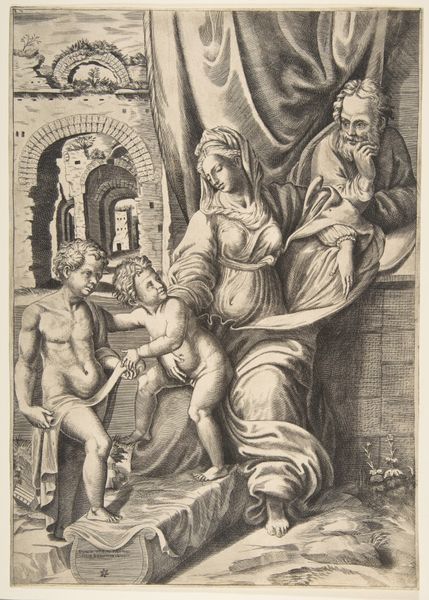
print, engraving
#
portrait
# print
#
figuration
#
line
#
genre-painting
#
northern-renaissance
#
engraving
Copyright: National Gallery of Art: CC0 1.0
Curator: Let's spend a moment with "The Lute Player and the Singer," an engraving created by Israhel van Meckenem around 1495-1503. Editor: It’s intriguing how this print evokes a quiet intimacy. Despite the stiffness in the figures, the details – the textures in their clothing, the monkey at the musician's feet – hint at a private moment. The way the musician almost seems to be serenading not just her ears, but her heart, too. Curator: It certainly does, and this connects to broader themes found in Northern Renaissance art. Meckenem was a prolific engraver, known for reproducing and reinterpreting the works of other artists, but he also made original compositions such as this genre scene. The lute, often associated with love and harmony, amplifies the imagery related to courtship. Editor: The juxtaposition of the elegant musical serenade against what appear to be caged or constrained desires – the chained monkey representing subjugation to an owner, not so different to how women were treated in a highly patriarchal society, is fascinating. The symbolism can be unpacked through both a traditional art historical lens as well as feminist theoretical models. Curator: I agree completely. Even seemingly inconsequential elements, such as the objects placed high on the doorjamb—they reflect cultural ideas. Consider that he created multiple versions of this image, varying details like the objects displayed and what seems like slight adjustments in posture—revealing changing tastes of the period, and the perceived "proper" place for courtship scenes. The iconographical variance and continuity are noteworthy for reflecting values. Editor: Yes, there’s a clear interplay between social norms and private expressions occurring. We’re given access to this otherwise closed encounter through the artist’s lens. One must wonder at his own motives for its circulation among elite patrons in northern Europe. Curator: Considering the rise of printmaking and dissemination, it creates another layer – one between private symbolism made for intimate consideration with possible commentary on that exact mode of cultural dissemination through reproduced imagery. Editor: Absolutely. Ultimately, it brings a rather striking awareness that artistic intent and consumer culture can collide, giving us a snapshot into the cultural fabric of a bygone era. Curator: Indeed. "The Lute Player and the Singer" serves not only as a testament to Israhel van Meckenem’s skill, but also as a reminder of the silent dialogues echoing in visual cultures throughout history.
Comments
No comments
Be the first to comment and join the conversation on the ultimate creative platform.
